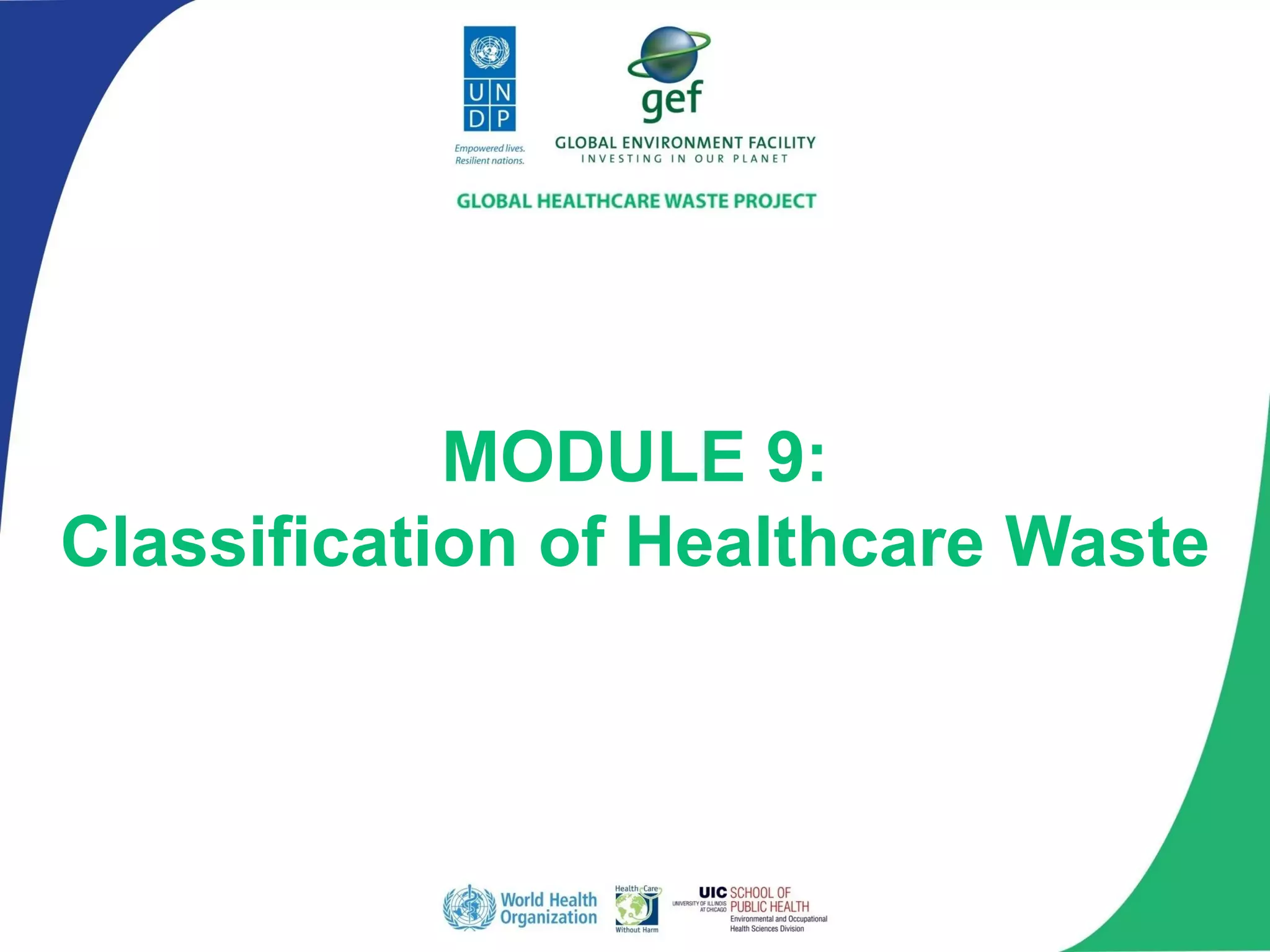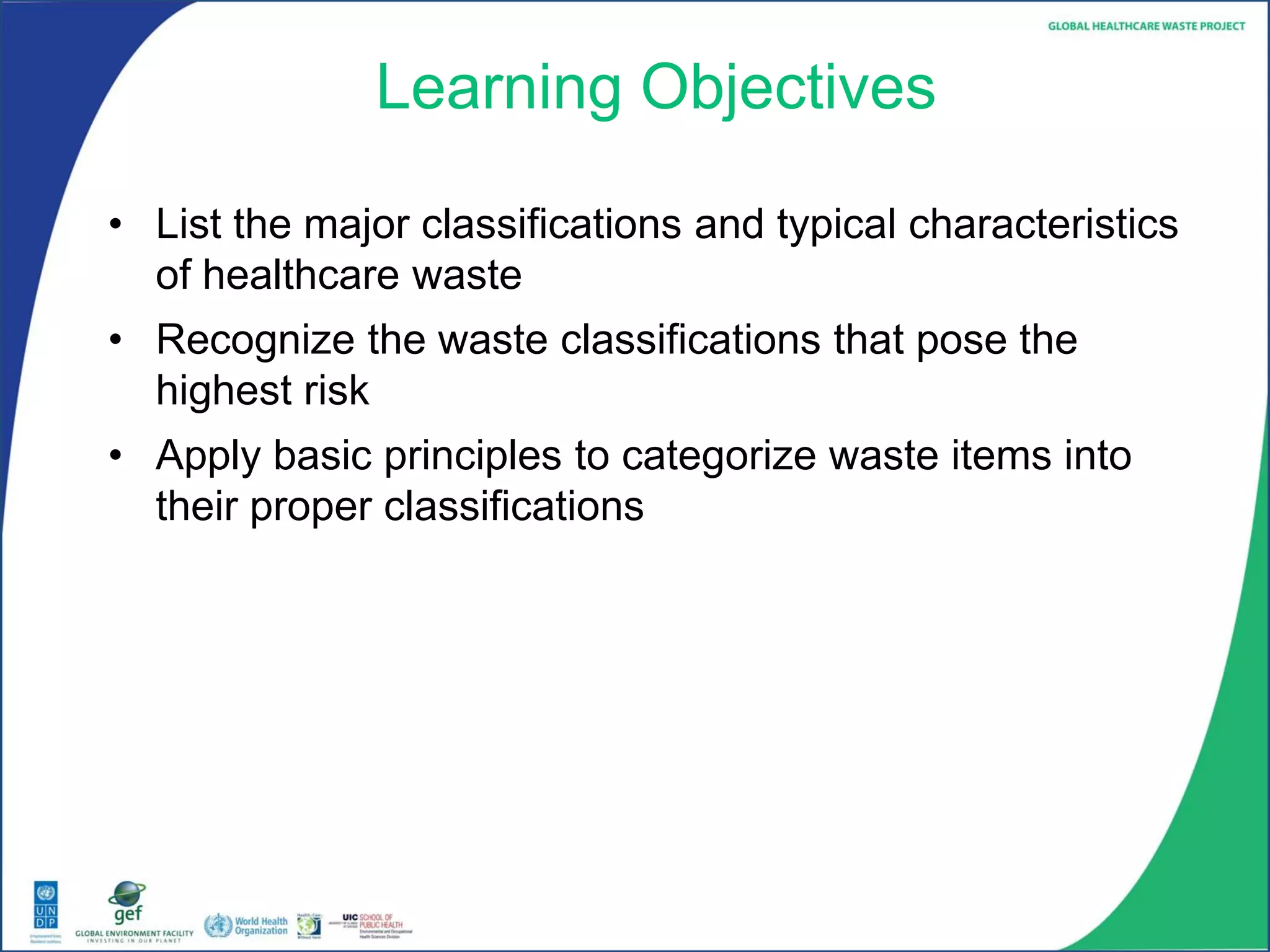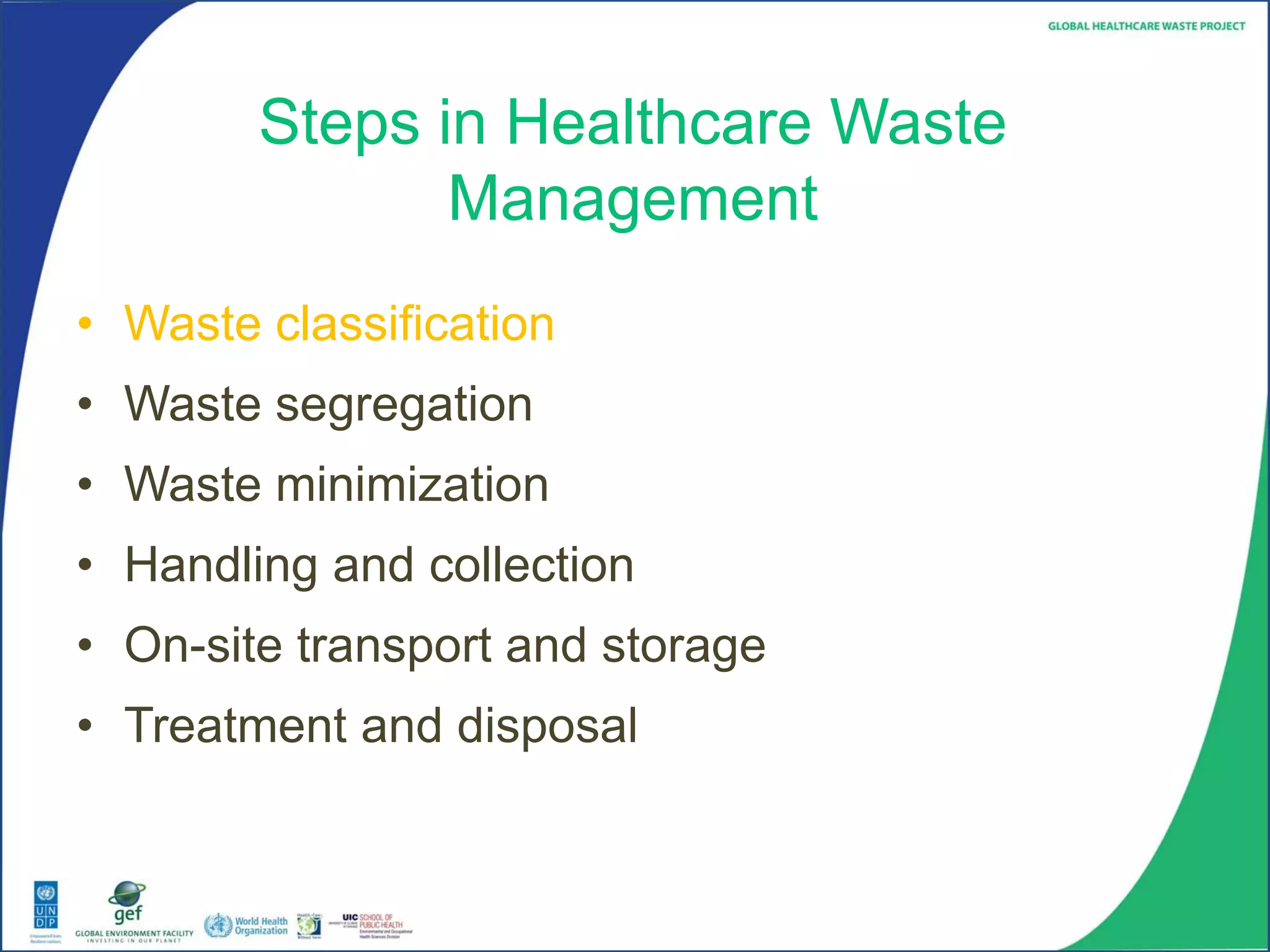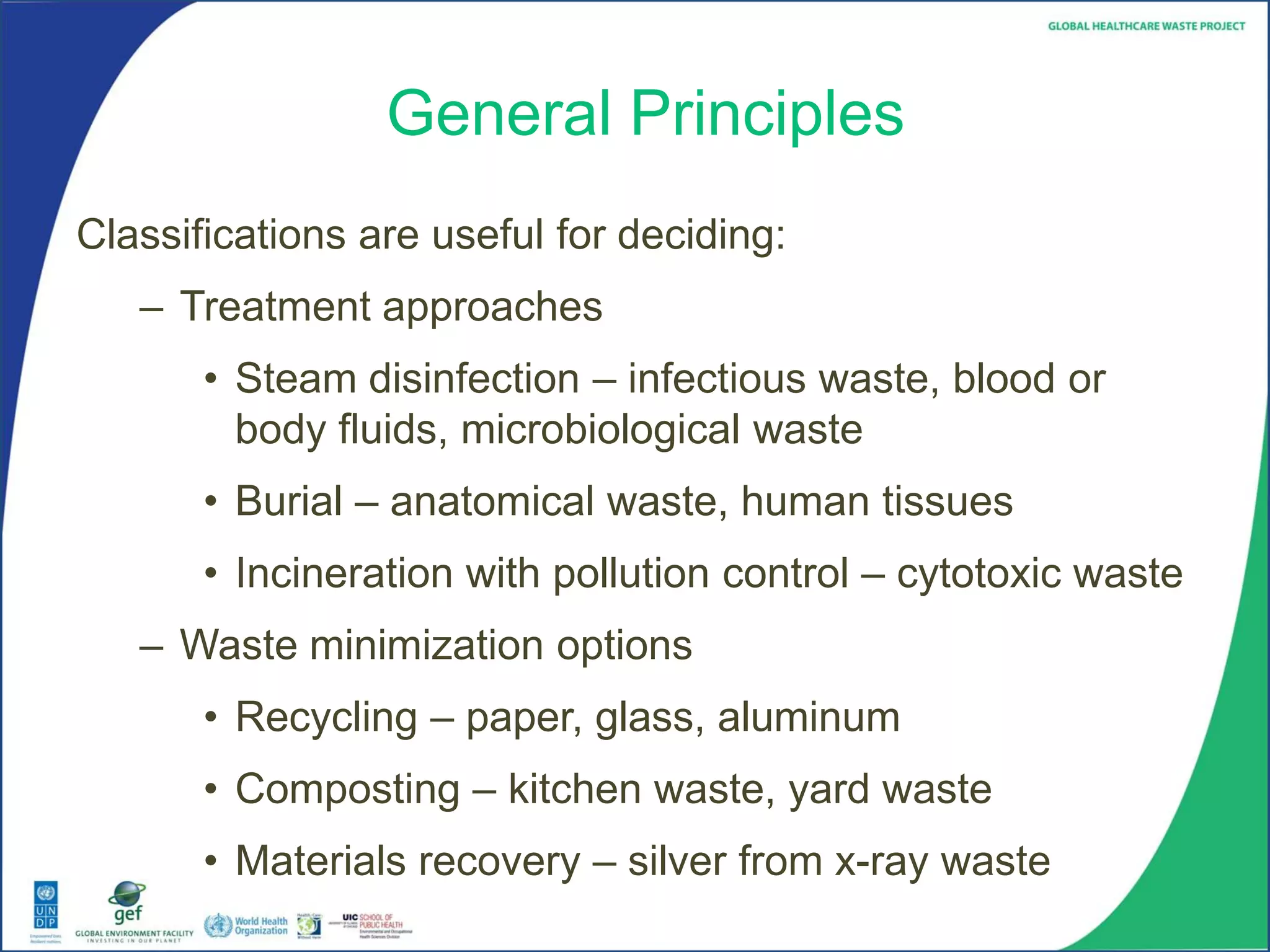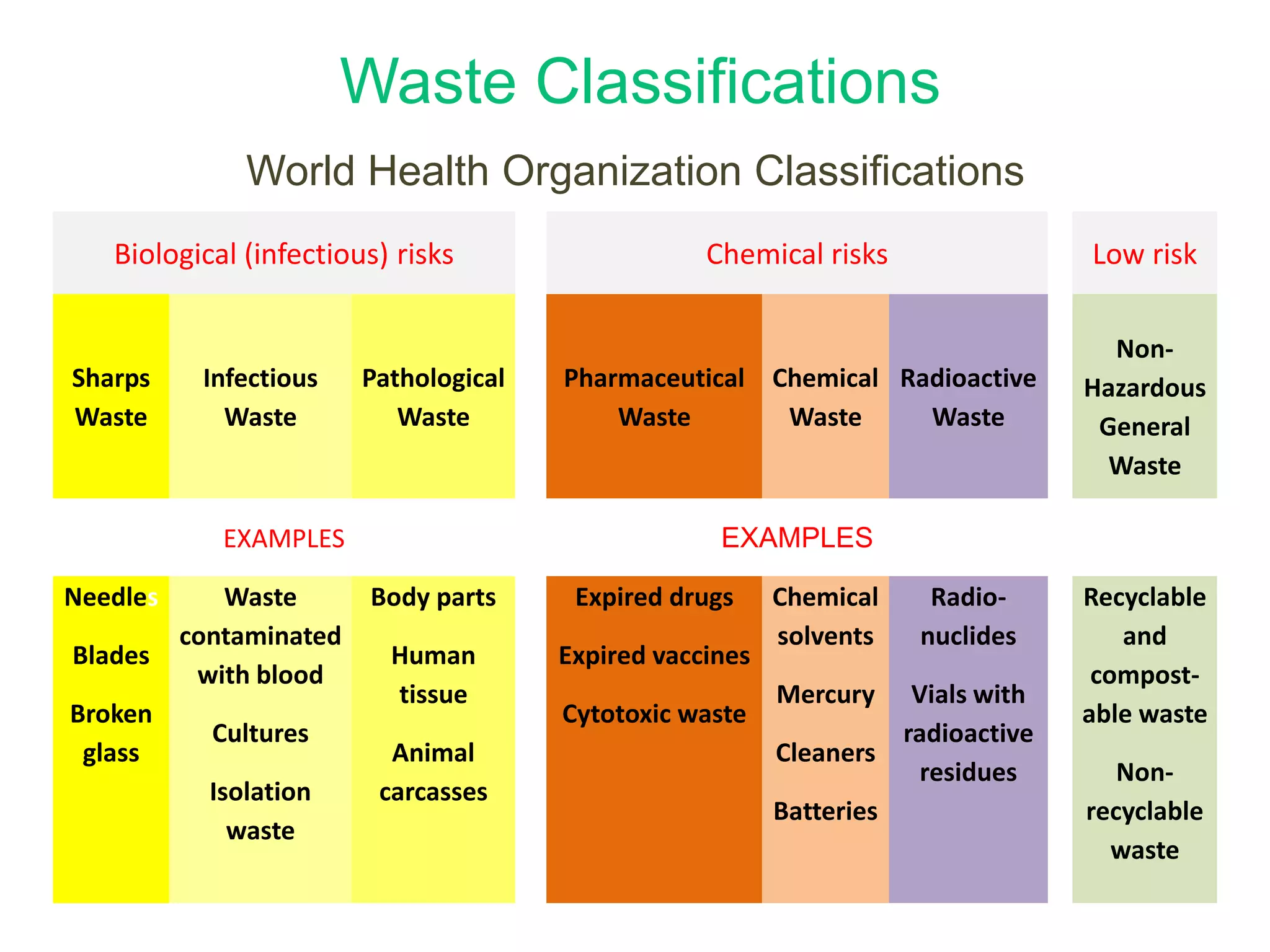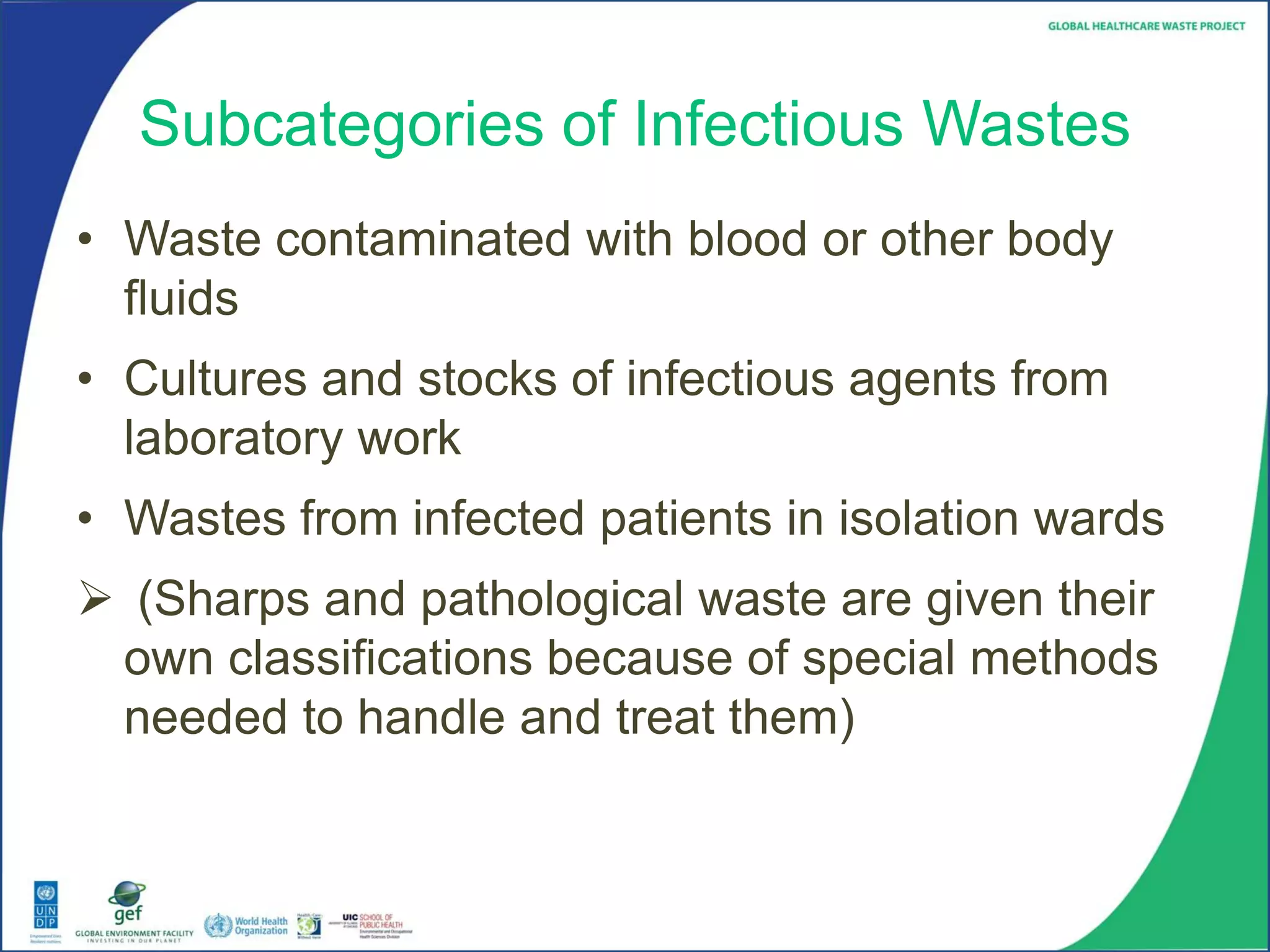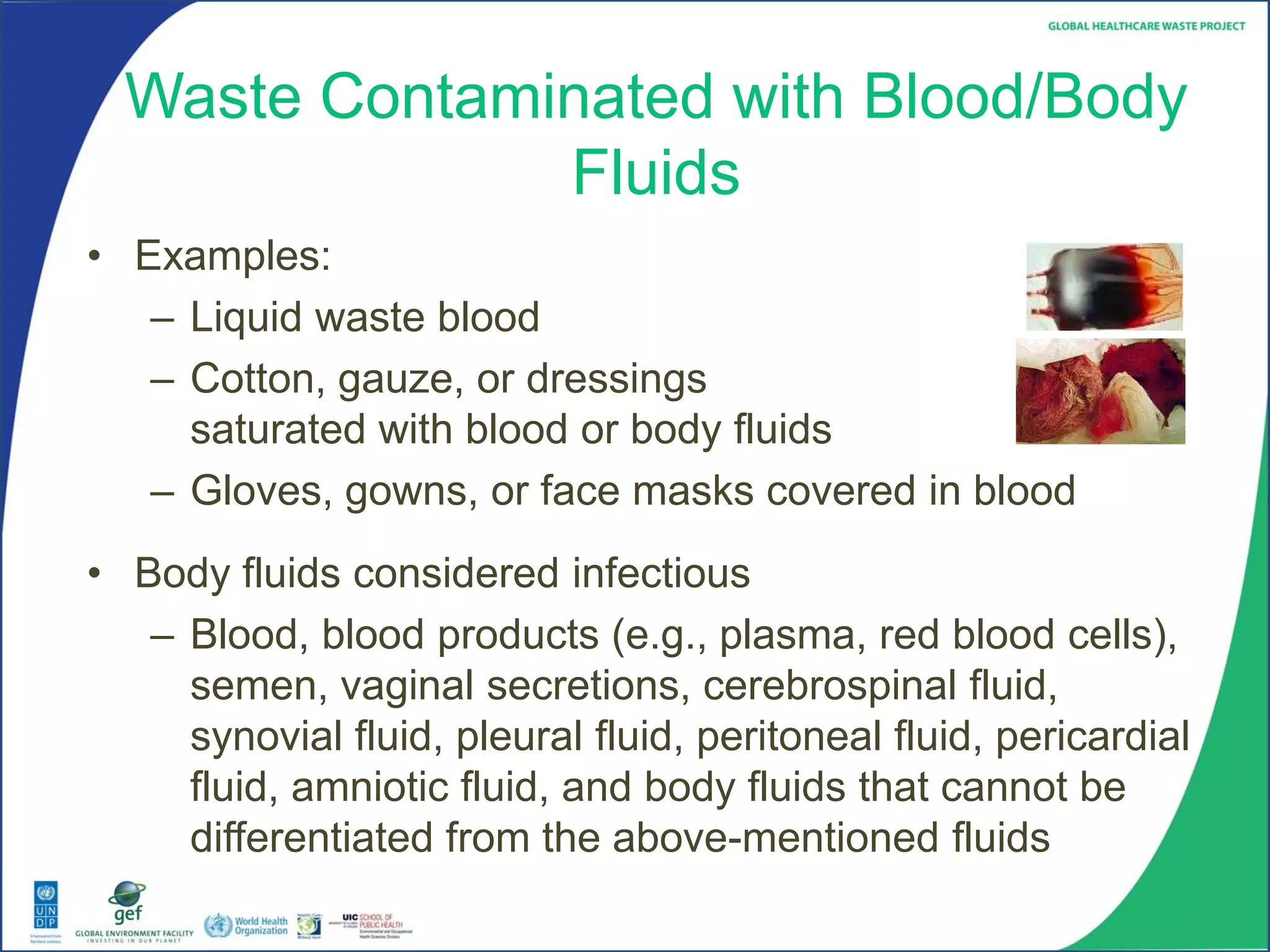This document provides an overview of healthcare waste classification. It describes the major classifications including infectious, sharps, pathological, pharmaceutical, chemical, radioactive, and non-hazardous general waste. Infectious waste includes waste contaminated with blood/body fluids, cultures/stocks from laboratories, and waste from isolation wards. Sharps waste poses the highest risk of disease transmission. Proper segregation of waste types is important for determining appropriate treatment and minimizing risks. The document also discusses general principles of healthcare waste management.
